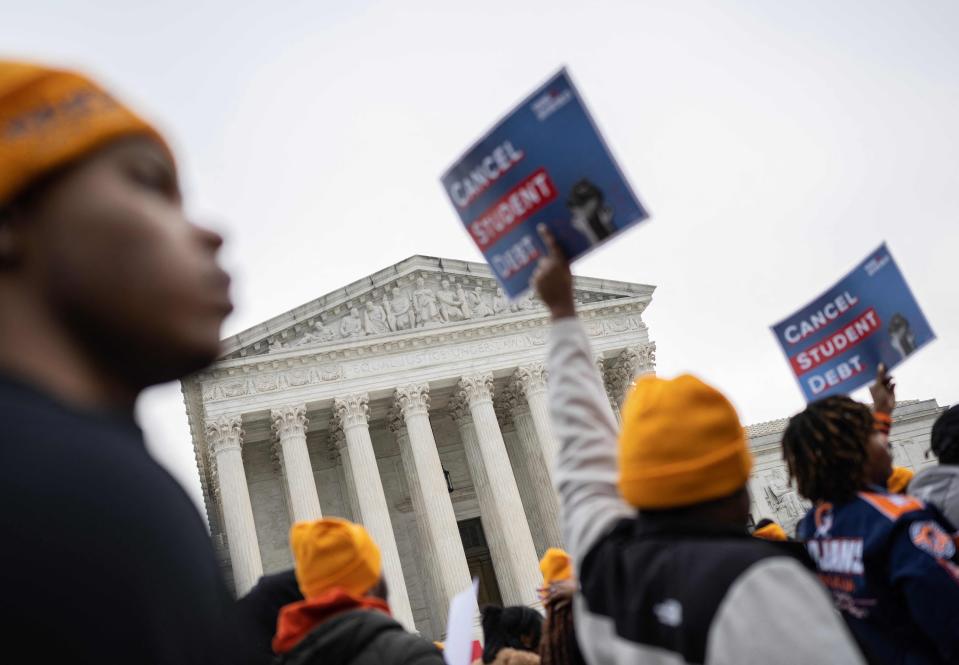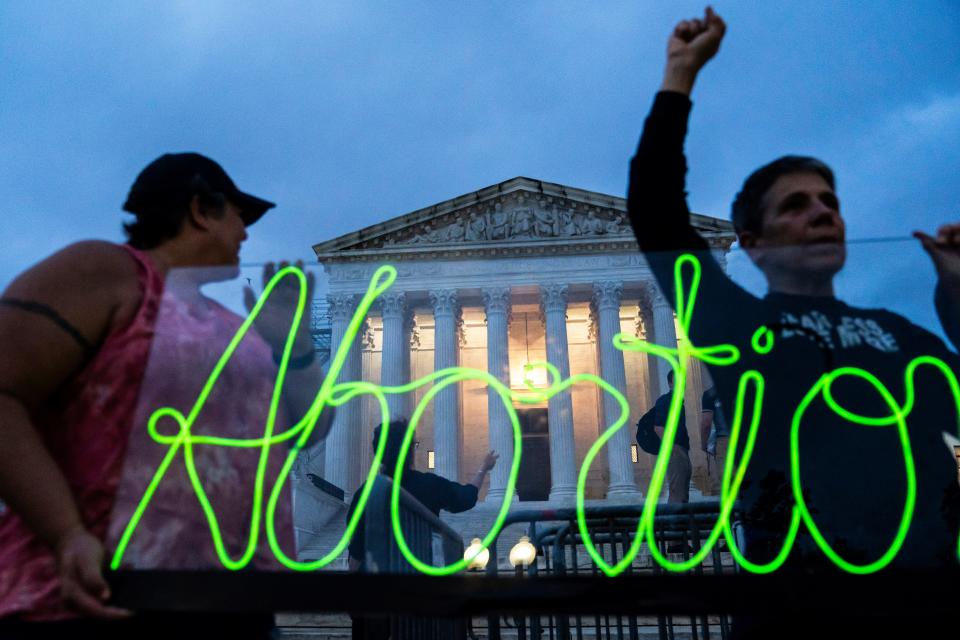Too conservative for the Supreme Court? The nation's most right-leaning appeals court draws scrutiny
- Oops!Something went wrong.Please try again later.
WASHINGTON − Deeply partisan legal battles this year over the abortion pill mifepristone, the regulation of ghost guns, and a White House effort to remove social media posts all have something − or rather, some place − in common: They all made their way to the Supreme Court from the same federal appeals court in Louisiana.
And in each of those cases, the conservative Supreme Court sided with President Joe Biden.
After overturning Roe v. Wade, expanding access to guns and undermining the separation of church and state, the current Supreme Court has become the most right-leaning in decades. Yet some of the court's conservatives appear eager to also send a message to the New Orleans-based 5th U.S. Circuit Court of Appeals: Don't overdo it.
"I think that the Supreme Court is basically saying 'Don't change things so radically,'" said Josh Blackman, a law professor at South Texas College of Law Houston. "It's just an act of moderation."
New term: From guns to herring: A look at the Supreme Court's biggest cases this year
That trend has been particularly pronounced in the court's emergency cases this year, which aren't precedent setting, but can have enormous real-world consequences. Concerned about government "censorship," the 5th Circuit this fall temporarily barred the White House, FBI and the Surgeon General from jawboning social media companies like Facebook and X to take down posts that officials said were full of disinformation.
Days later, the Supreme Court lifted that ban and agreed to decide the underlying case.
'Testing' the boundaries of conservative outcomes
In the term that began this month and runs through June, the nation's highest court has agreed to review eight decisions from the 5th Circuit − more than any other appeals court. They include some of the most far-reaching issues on the docket, such as whether people who are the subject of domestic violence restraining orders may be barred from owning guns and whether to weaken a controversial consumer protection agency.

And there is likely more to come: On Friday, the justices discussed whether to take up an appeal of a 5th Circuit decision that invalidated the Trump administration's ban on bump stocks, a device that uses the kickback of a semi-automatic firearm to mimic automatic firing. It's not clear when the court will announce whether it will decide that issue. Later this year, the justices are expected to agree to review a 5th Circuit decision that severely limited access to the abortion pill mifepristone.
A majority of the justices in April agreed to put that 5th Circuit mifepristone decision on hold. Only Justices Clarence Thomas and Samuel Alito noted an objection.
The 5th Circuit hears appeals from courts in Texas, Louisiana and Mississippi, deeply red states where Republicans control legislatures and attorneys general can draw national headlines with culture war suits against a Democratic president. Federal district courts, particularly in Texas, have become a forum of choice for conservative groups who bet not only on winning but also getting their arguments heard at the Supreme Court when their opponents appeal.
And then there is the Trump effect: Six of the 5th Circuit's 16 judges were appointed by former President Donald Trump, who had an enormous impact on federal courts through a flood of nominations over four years. Another six judges were named by Republican Presidents George W. Bush and Ronald Reagan. Four were named by Democrats.

Last term, the Supreme Court at least partially reversed seven of the nine appeals from the 5th Circuit − including a major immigration case in which Texas and other states challenged Biden's ability to prioritize certain immigrants for deportation. By comparison, last term, the Supreme Court reversed 10 of 13 decisions by the San Francisco-based 9th Circuit, widely viewed as the nation's most liberal appeals court.
The win-loss percentage for both courts, in other words, was about the same.
Between 2019 and 2022, the Supreme Court reversed decisions from the 5th Circuit twice as frequently as it affirmed them, according to a review by Adam Feldman, who runs a blog called Empirical SCOTUS.
If an observer were to plot federal courts based on ideology, the 5th Circuit would land somewhere to the right of the Supreme Court, said Aziz Huq, a University of Chicago law professor. Given that, Huq said, "you would expect to see the Fifth Circuit essentially testing where the boundary is." And that, some speculate, may be advantageous for a Supreme Court that polls suggest has lost the confidence of many Americans on the left.
"If the court was savvy, what it would want is at least one court that looks like it was it was further out," Huq said. "It could use that court as a way of triangulating and positioning itself as moderate even as it moves the law in the direction that it wanted."

An 'outlier' decision puts guns back on Supreme Court docket
University of Texas law professor Tara Leigh Grove said that some of the criticism of the 5th Circuit may be misdirected.
"I think there are some examples where at least some judges on the 5th Circuit have pushed the law in a way that was both surprising and probably not something we would expect from any court," Grove said. "What worries me is people taking those individual examples and just kind of making broad generalizations about a court of appeals."
Next week, the Supreme Court will hear arguments in one of the most controversial cases of the year: A follow on to a blockbuster Second Amendment decision last year in New York State Rifle & Pistol Association v. Bruen. In that case, a majority of the justices struck down a New York law that curbed who may obtain a license to carry a handgun in public. The court also set a new standard by which other gun laws would be judged. To pass constitutional muster, those laws would have be "consistent with this nation's historical tradition of firearm regulation."
Zackey Rahimi was convicted of a federal law enacted in 1994 that prohibits Americans from possessing a firearm while they are the subject of a domestic violence restraining order. Rahimi's defense team argued that because there was no founding-era law that banned guns from people in Rahimi's position, his conviction should be tossed.
In February, the 5th Circuit agreed. The law at issue, the court ruled, may embody "salutary policy goals meant to protect vulnerable people in our society." But that wasn't the standard the Supreme Court had set. The law, the appeals court ruled, was a historical "outlier that our ancestors would never have accepted."
In some ways, Grove said, the 5th Circuit's decision on Rahimi was like holding a mirror up to the Supreme Court.
"The Supreme Court itself has been pushing the law in lots of directions," she said. "Now we're starting to get a sense of what that may actually mean on the ground."
This article originally appeared on USA TODAY: How the 5th Circuit is testing the Supreme Court on guns, abortion

